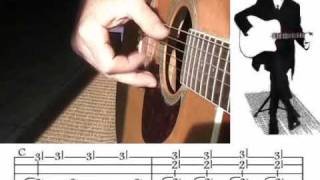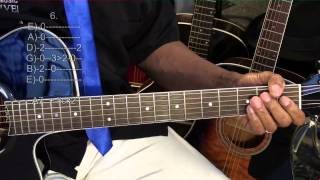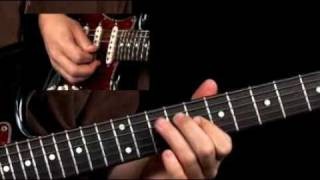Blues Guitar Lessons - Juiced Blues - Super Dom 2 - Soloing Breakdown
Published on 17 March 2016
FULL COURSE, TAB, JAM TRACKS: http://truefire.at/fADiR3
More free guitar lessons: http://bit.ly/TrueFire
** Take note: Overall Super Dom Blues is based on a simple I-IV-V in G consisting of dominant 7th leanings for each of the three chords. I say "leanings" because as you'll see in the comping lesson that follows (Super Dom 3) there's going to not only be dom7 chords coming at you, but also extended dominant chords and stacked fourth voicings as well. It's all part of the juicing process, my friends. This freedom of interpretation is something you should be aware of and should begin to feel free to use. With that cleared up, let's get into the secret behind the sauce, shall we?
As said in the previous segment, superimposing consists of playing a secondary element over a primary element. In this instance, secondary melodic ideas in the form of superimposed m7b5 arpeggios and a single pentatonic scale are played over the primary harmonic movement as dictated by the bass line (speaking of, going right along with the idea of freely interpreting the vibe as dominant; in regards to what's going on in the background--i.e., the practice rhythm track--that concept applies here as well). Now, a m7b5 arpeggio is made up of the following formula: 1, b3, b5, b7. But when played over the I and IV chords, the notes within the arps change to this formula: 3, 5, b7, 9. So the superimposition is derived from playing a m7b5 arpeggio a major 3rd above the chord's root, or put simply, from the 3rd. Let's examine one instance closely to make sure you got the gist. Over G7 whose 3rd is B, a Bm7b5 would be employed, which is made up of B, D, F, and A. Considering G as the root, the notes in that Bm7b5 arpeggio are as follows: B is the 3rd, D is the 5th, F is the b7, and A is the 9th. That, ladies and gents is the gig.
While the same concept is used over the C7 (IV) with the Em7b5 serving as the arpeggio built on the 3rd of the chord, the A minor pentatonic scale played over the D7 (V) superimposition works out as follows. Against the D root the notes are: A (5th), C (b7), D (root), E (9th), and G (11th). Keep in mind that 11th shouldn't be a note you resolve on as that will directly clash with the powerfully present tritone interval between the 3rd and b7th. It works within a line for sure, but just make sure you fly on by and land on anything but.
 Blues Guitar - Blind Blake - Volume 2 - Ragtime Gu...
Blues Guitar - Blind Blake - Volume 2 - Ragtime Gu...
 Bo Diddley Style Rhythm Guitar Lesson
Bo Diddley Style Rhythm Guitar Lesson
 Eric Clapton Slow Blues Guitar Lesson
Eric Clapton Slow Blues Guitar Lesson
 Single Chord Slow Blues With Licks Prt1 Old School...
Single Chord Slow Blues With Licks Prt1 Old School...
 Robben ford / Eric Clapton style lick - Full-speed...
Robben ford / Eric Clapton style lick - Full-speed...
 Robben Ford Guitar Lesson - Chords Are Everything...
Robben Ford Guitar Lesson - Chords Are Everything...
 West Coast Blues Guitar Lessons - Uptown Stomp 2
West Coast Blues Guitar Lessons - Uptown Stomp 2
 Blues Guitar Chords
Blues Guitar Chords
 From Texas to the Delta - Acoustic Blues Guitar Le...
From Texas to the Delta - Acoustic Blues Guitar Le...
 Your First Jazzy Blues Groove | TB 076
Your First Jazzy Blues Groove | TB 076